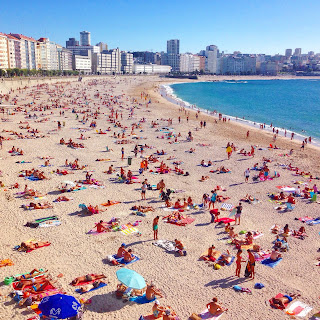Santander Sells €10 Billion worth of
Spanish Property
The Spanish real estate industry has been moving at a brisk
pace for the past 24 months at the very least, as the residential housing
market in particular has been boosted by the activity – and cash – of private
buyers.
For the longest time though, following the crash of 2008,
the biggest portfolio holders in Spain have been the banks – forced to clean up
homes and offices left behind by people and companies defaulting on their mortgages
following the credit crunch.
Banco Popular in particular became the largest landlord in
Spain in a matter of months, becoming the owner of around €30 billion worth of
real estate at pre-crash prices.
The financial troubles of Banco Popular are well-known
however, and the bank was recently bailed out by another Spanish bank,
Santander. This week saw the anticipated – but still surprising – move of
Santander selling all of their property for €10 billion to the Blackstone
Investor group out of the US.
This property portfolio includes hundreds of houses,
apartments, and hotels, along with plenty of land. Analysts believe that the
property has lost around two-thirds of its value since 2008.
Now the property is in the hands of the proactive and
committed Blackstone Group, who have long-since seen Spanish property as a
profitable, long-term investment. People in many quarters are celebrating the
sale as it is another indication that people are becoming more confident and
enthusiastic about Spanish property.
As well as in increase in transactions for resale
properties, residential construction across Spain is increasing, with much of
the activity driven by foreign investment.
Reuters released data that showed around a third of the €22
billion invested directly in Spain in 2015 went to construction and realestate, and it’s expected that this figure will increase for 2016 and 2017
following the release of official data.




